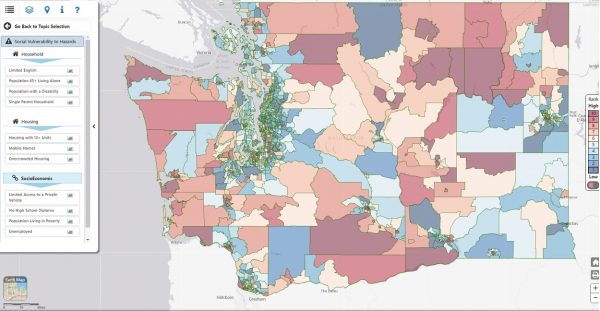Front and Centered advocates for targeting clean energy and carbon reduction investments to frontline communities hit first and worst by pollution and climate change. Targeted investments should accompany universal investments, and combined can ensure that climate and environmental action is equitable, effective, and politically viable. It’s a cornerstone of the policy framework developed by the Alliance for Jobs and Clean Energy and adopted by Representative Fitzgibbon in House Bill 1646.
Frontline communities are those facing greater social, health and economic barriers, like income and racial disparities, and environmental burdens, like extraction, pollution, and climate change. But what are the key indicators that can be used to define these areas? How do various factors combine to characterize which communities are at greatest risk and need of investment and whether it’s getting better or worse?
This is the question that drove us to launch a new work group of communities of color, researchers, and government with the goal of developing an environmental justice mapping tool for Washington State. Specifically, we identified a need to rank and monitor environmental justice areas as a tool for community empowerment, prioritizing investment, policy and programmatic action.
Environmental justice mapping has picked up steam nationally in the past few years with the rollout of EPA’s EJ Screen and CalEnviroScreen now in version 3.0. EJ Screen offers anyone who uses it an index of simple environmental and demographic indicators to compare census tracts nationally. CalEnviroScreen combines pollution burdens (exposure and effects) and population characteristics (sensitivity and socio-economics) into an index to compare census tracts in California. It shapes nearly a billion dollars in carbon reduction investments each biennium. It was proceeded by a university-based screening method and has been repeatedly strengthened in the later versions to reflect concerns raised through data evaluation and community engagement.
Washington State is fortunate to have the Washington Tracking Network (WTN) to build upon. WTN is a public website of the Department of Health where users can find data and information about environmental health hazards, population characteristics, and health outcomes. This work group hopes to add a scientifically sound and community affirmed environmental justice index of indicators to the WTN suite of tools. To accomplish this, Front and Centered convened a workgroup that includes researchers at the UW Dept of Environmental & Occupational Health Sciences, staff from the Washington State departments of Ecology and Health, and member organizations and coordination support from Front and Centered. The work group started up following a meeting of the Front and Centered community with the Ecology Director Maia Bellon, Secretary of Health John Wiesman, and Executive Director of Washington State Board of Health Michelle Davis in the fall of 2016.
Over the next several months this work group will gather the information needed to propose an EJ mapping methodology unique to Washington State. We will listen to communities through creating and joining spaces where diverse groups in representative geographies can voice key environmental justice concerns. Then we will review the literature and identify appropriate methodologies. Two key questions that we hope to answer through this process are: 1) What are the indicators that best reflect the scientific evidence and community concerns about environmental justice and 2) How can these indicators be combined to accurately rank cumulative burdens and show progress on environmental justice.
To learn more about how you can support this project or for more information contact [email protected]
Don’t miss a post: Subscribe to our monthly newsletter, like us on Facebook or Tweet at us @frontandcenterd



